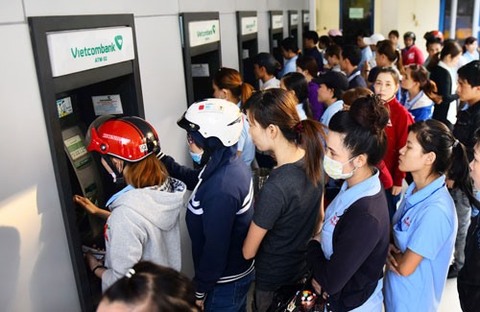Vietnam’s banking industry set to be revolutionised by big data and cloud computing
Vietnam’s banking industry set to be revolutionised by big data and cloud computing
AI, big data, and cloud computing are revolutionising industries around the world and banking is no different. Banks in developing economies stand to benefit the most.

Temenos has been building out the big data capabilities for both Techcombank and Sacombank
|
Dramatic advances in big data, cloud computing, and AI are transforming the customer experience, leading to a defining moment for the financial institutions who are quick to embrace them to be able to generate greater insights into what their clients want and deliver a wider range of tailored products more efficiently and cost-effectively.
In developing economies like Vietnam, with a fast-growing, digitally savvy population and a financial services industry that is not beset by legacy systems, banks are especially well-positioned to apply these advances quicker than their more established international peers.
The COVID-19 pandemic has galvanised the adoption rate of new technologies. Banks need to reimagine their channels boldly, anchored in an integrated vision for distribution.
Knowing what your clients want – and rapidly tailoring products for them
Across several industries, for instance in retail, the separation between the “factory” where products are made and the “shop floor” where they are consumed has been growing as supply chains, means of distribution, and marketing reach have all advanced dramatically. In turn, this has created economies of scale, meaning that suppliers can offer a wider variety of better products to their customers anytime, anywhere. Banks are no different in this respect. The most recent advances in computing power have generated the ability to add distribution networks and access new customers remotely, which is transforming these businesses.
Techcombank is one of Temenos’ longest-standing clients in Vietnam. Temenos’ work with Techcombank has enabled it to build its physical branch network as well as its online offering – the more personalised and efficient customer service has also resulted in growth in profitability per customer.
Banks, more than any other industry, are poised to reap the rewards of applying AI technology. While tech companies have rich customer data, banks are amassing all the transaction data in real-time that other tech players lack. By applying advanced analytics, banks can make new, targeted offerings at any critical point of their customer’s financial journey, serving the twin purposes of bringing in new business and reinforcing customer loyalty.
While Sacombank has been working with Temenos since 2004, Sacombank initiated a series of large technology projects including the Data Lifecycle Management for the Temenos T24 core banking platform. Within weeks, the application had shown cost efficiencies while centralising the bank’s knowledge database and leveraging real-time data management.
Financial institutions that embrace these new technologies will give themselves the opportunity to stay at the cutting edge as intuitive new programmes can be designed and deployed within days. A survey conducted by the Economist Intelligence Unit, commissioned by Temenos earlier this year, found that 77 per cent of bank executives believe that unlocking value from AI will be the differentiator between winning and losing banks.
Vietnam’s advantages
Financial institutions in Vietnam are better placed than most to take advantage of new technologies. This is a result of a combination of digital infrastructure, demographics, and geography.
In more established banking markets such as Hong Kong, Singapore, and Japan, many banks are forced to combine their old systems with the new, sometimes resulting in legacy issues. Many Vietnamese banks, unencumbered by deep-rooted legacy systems, are at an advantage.
Demographics are also a factor. Vietnam and other emerging markets like the Philippines and Indonesia have much younger populations than Japan for instance. The burgeoning, younger middle classes in countries like Vietnam are far more technologically-savvy than ageing populations in Japan which may resist adopting new technologies. They now expect their banks to provide the same experience.
Finally, geography plays a role in Vietnam, which is much larger Singapore and Hong Kong, so there is a need to have an excellent online and mobile banking interface to serve customers in remote rural areas.
How banks are taking advantage of this opportunity
Banks in Vietnam face different challenges and opportunities in how to apply new technology, depending on their business strategy and scale of their existing infrastructure.
Institutions with longer-established IT infrastructure can either choose a big band transformation or a continuous renovation while smaller institutions, which may not have the financial or IT muscle to support the set-up of a full stack can use Software-as-a-Service to avoid the front-loaded cost, and enables banks to install specific parts of the infrastructure and deploy it as they want.
The banking industry is being revolutionised by the development and adoption of technologies such as cloud computing, AI, and advanced data management, meaning that banks can now serve the individual needs of a wider pool of clients better than any time in the history of the industry. For Vietnamese financial institutions, building a relationship with the right partner, who has the experience both in the industry and in the market, the technological muscle, and research and development capabilities will be vital to capitalising this defining moment for the country and the global financial services industry.




























